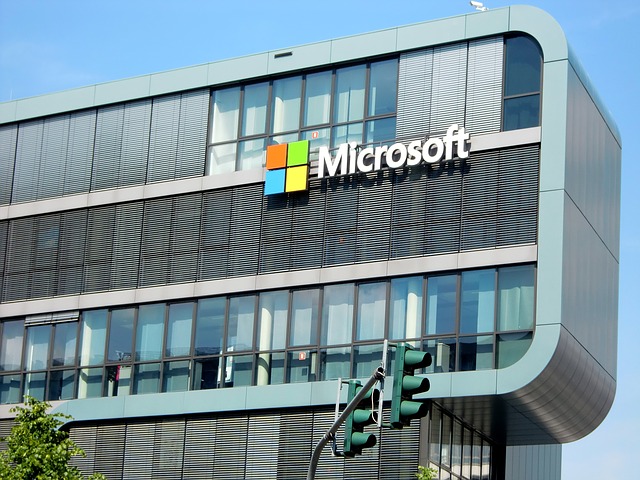How Is Microsoft Strengthening Its Cloud Arsenal?

Microsoft (Nasdaq: MSFT) last week announced its third quarter results that blew past all market expectations. Microsoft’s Azure continued to shine and helped boost its Intelligent Cloud revenue.
Microsoft’s Financials
Microsoft’s Q3 revenues grew 16% over the year to $26.8 billion, ahead of the market’s forecast of $25.77 billion. Adjusted EPS of $0.95 was also ahead of the Street’s expectations of $0.85 for the quarter. Net income increased 35% to $7.4 billion.
Microsoft returned $6.3 billion to shareholders in the form of dividends and share repurchases in the third quarter of fiscal year 2018, an increase of 37%.
By segment, revenues in the Productivity and Business Processes grew 17% to $9 billion above the Street estimate of $9.25 billion. Within the segment, revenue from Office commercial products and cloud services increased 14%, Office consumer products and cloud services increased 12%, and Dynamics increased 17%. LinkedIn revenue increased 37% to over $1.3 billion. Last year, Microsoft integrated Dynamics 365 with LinkedIn to help salespeople deliver better outcomes using insights from LinkedIn Sales Navigator and LinkedIn’s professional network. The solution helps salespeople view LinkedIn information about leads, contacts, accounts, and opportunities directly in the Dynamics CRM.
The Intelligent Cloud segment grew 17% to $7.9 billion, compared with the market’s estimates of $7.68 billion. Server products and cloud services revenue increased 20% driven by 93% growth in Azure revenue and Enterprise Services revenue increased 8%. This is the 11th consecutive quarter of more than 90% revenue growth for Azure. It had reported 93%, 97%, 90%, and 98% growth in the previous four quarters. According to Synergy Research Group, Amazon’s AWS leads the cloud infrastructure market with 34% in 2017, up 0.5% while Microsoft held a 13% share, up 3%.
Revenues from the More Personal Computing segment grew 13% to $9.9 billion above the Street estimate of $9.25 billion. Revenue from Windows OEM grew 4%, Windows commercial grew 21%, Gaming increased 18%, Surface increased 32%, and Search advertising excluding traffic acquisition costs increased 16%.
For the fourth quarter, Microsoft projected revenues of $28.8-$29.5 billion, ahead of the consensus of $28.1 billion. For fiscal 2019, the company expects revenue growth to be driven by the transition to cloud services.
Microsoft’s Acquisitions
During the third quarter, Microsoft announced the acquisition of Avere Systems for an undisclosed sum. Avere was founded in 2008 and is a leading provider of high-performance NFS and SMB file-based storage for Linux and Windows clients running in cloud, hybrid and on-premises environments. It uses a combination of file system and caching technologies to help customers who run large-scale compute workloads. Its customers included names like Sony Pictures Imageworks and Moving Picture Company. Microsoft plans to leverage Avere’s storage expertise to improve its cloud offerings so that customers will be able to run complex high-performance workloads in Microsoft Azure.
Microsoft also announced the acquisition of PlayFab, a backend platform provider of services to build, launch, and grow cloud-connected games. Terms of the deal were not disclosed. PlayFab’s tools allow game developers to build games across all platforms. Its backend services offer both large and small studios cost-effective development solutions that can be scaled with games. Game studios can leverage PlayFab’s services to engage, retain, and monetize players by providing them with access to an intelligent cloud platform that can be used not only to build and operate games, but also to analyze gaming data and improve gaming experiences. The acquisition is expected to help Microsoft improve its gaming offerings across Azure.
Microsoft recently introduced Azure Sphere, its new chip-to-cloud security platform for microcontroller powered IoT devices.
According to Gartner, the overall cloud market grew 18.5% in 2017 to $260 billion. That figure includes several sub-sectors, like infrastructure, platform, software, business processing, security, and advertising as a service. The fastest growing sectors is infrastructure which is estimated to have grown 36.6% to $35 billion. This is where most of Microsoft’s investment and acquisition focus has been over the past few years.
Its stock is currently trading at $94.26 with a market capitalization of $726 billion. It hit a 52-week high of $97.24 in March this year and a 52-week low of $67.14 in May last year.
Under Nadella, Microsoft has got its mojo back!
(Click on image to enlarge)
Sramana Mitra is the founder of One Million by One Million (1M/1M), a global virtual incubator that aims to help one million entrepreneurs ...
more



#Microsoft is smart to reinvest in the cloud. Competition is fierce but $MSFT has an edge.